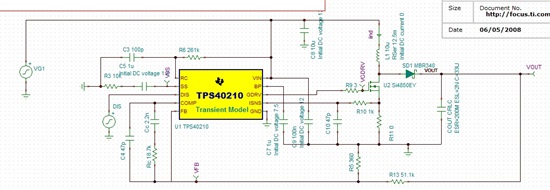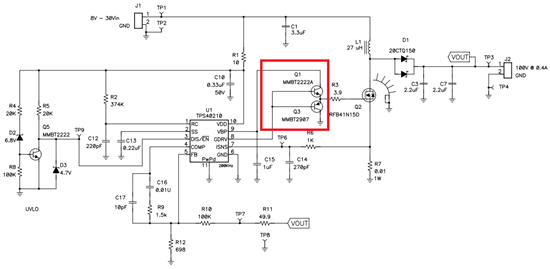Hi,
I would like to use TPS40210 to generate a +100V/0.5A output.
I had downloaded the TINA reference design from TPS40210 webpage, and modified the following items to generate +100V output
- remove the load on output
- set over-current protection resistor(R11) to 0 Ohm, ignore this function for now
- output voltage divider R5 set to 360 Ohm, so I should get 100V on output
However, output voltage can only be boosted up to about 40V, as the following figure. I had tried to adjust switching frequency and control loop filter(COMP pin), but the problem still the same.
I also attached the TINA simulation file as below, can someone give me a hand ?
2845.[Nate]TPS40210_TRANS_Steady.TSC
Thanks a lot.





